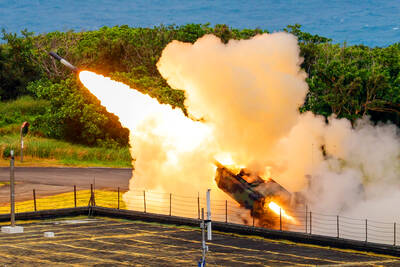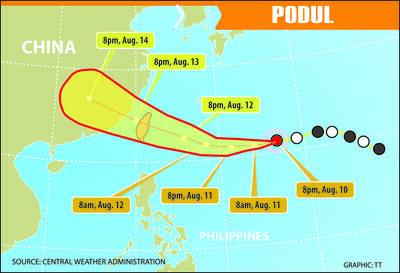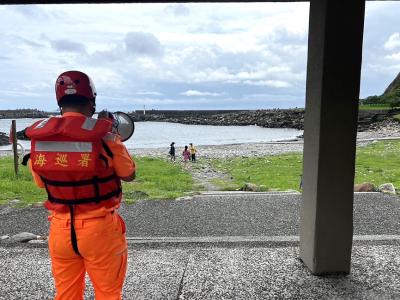Asian currencies fell this week, led by South Korea’s won, as North Korea’s nuclear arms test and threat of military strikes prompted investors to seek refuge in the US dollar.
The Philippine peso and Malaysia’s ringgit weakened after the two nations reported worse-than-expected economic data for the first quarter.
South Korean Vice Finance Minister Hur Kyung-wook said on Friday the government was “closely monitoring” financial markets after North Korea conducted a nuclear weapons test on Monday and launched a series of short-range missiles.
.jpg)
The won fell 0.6 percent this week to 1,255.25 per US dollar in Seoul, according to data compiled by Bloomberg. The peso declined 0.7 percent to 47.34 and the ringgit dropped 0.7 percent to 3.4950.
The Bloomberg-JPMorgan Asia Dollar Index, which tracks the region’s 10 most-active currencies excluding the yen, slipped 0.3 percent this week. It reached a seven-month high last Friday.
The yen tumbled 1.6 percent to ¥96.34 per US dollar as rising yields on US Treasuries and signs a global recession is easing prompted Japanese investors to send more funds abroad in search of better returns.
The New Taiwan dollar pared gains from the strongest level since December on speculation the central bank intervened to weaken the currency and aid exporters.
Taiwan’s central bank probably sold the currency in the last 15 minutes on Wednesday, the last day of trading for the week, said Henry Lin, a foreign-exchange trader at Shin Kong Commercial Bank (新光商銀) in Taipei.
The NT dollar rose earlier as US and Japanese data added to evidence a global recession is abating, bolstering demand for emerging-market assets.
Taiwan’s currency closed little changed at NT$32.650 per US dollar on Wednesday, according to Taipei Forex Inc. It reached NT$32.504, the strongest since Dec. 19.
Indonesia’s rupiah fell 0.5 percent this week to 10,285 per dollar on speculation importers increased dollar purchases to settle bills and debt payments.
Elsewhere, the Singapore dollar dropped 0.4 percent to S$1.4472. China’s yuan declined 0.07 percent to 6.8281, the biggest slide in two months, before the nation’s financial markets closed for a public holiday on Thursday and Friday.
India’s rupee rose 0.8 percent, trimming losses this week to 0.3 percent, after the economy expanded more than expected in the first quarter. The currency gained 6 percent this month, Asia’s best performer excluding the yen.
The US dollar declined beyond US$1.41 against the euro for the first time this year as evidence the global recession is easing sent investors in search of assets with higher returns.
The US currency also posted its biggest monthly drop versus the euro this year and fell yesterday against major counterparts including the Australian and New Zealand dollars as South Korea said its state pension fund plans to hold fewer Treasuries.
The US securities were poised for a second month of declines on concern debt sales will overwhelm demand.
The dollar weakened 1.4 percent to US$1.4136 per euro at 4:17pm in New York, from US$1.3941 on Friday, extending its decline this month to 6.4 percent, the biggest since December, when it dropped 9.2 percent. The dollar depreciated 1.7 percent to ¥95.24 from ¥96.85. The yen advanced 0.3 percent to ¥134.67 per euro from ¥135.04 yesterday.
Sterling increased as much 1.6 percent to US$1.6198, the highest level since Nov. 5, and posted a 9.3 percent monthly gain, the biggest since 1985.

DEFENSE: The first set of three NASAMS that were previously purchased is expected to be delivered by the end of this year and deployed near the capital, sources said Taiwan plans to procure 28 more sets of M-142 High Mobility Artillery Rocket Systems (HIMARS), as well as nine additional sets of National Advanced Surface-to-Air Missile Systems (NASAMS), military sources said yesterday. Taiwan had previously purchased 29 HIMARS launchers from the US and received the first 11 last year. Once the planned purchases are completed and delivered, Taiwan would have 57 sets of HIMARS. The army has also increased the number of MGM-140 Army Tactical Missile Systems (ATACMS) purchased from 64 to 84, the sources added. Each HIMARS launch pod can carry six Guided Multiple Launch Rocket Systems, capable of

Authorities have detained three former Taiwan Semiconductor Manufacturing Co (TMSC, 台積電) employees on suspicion of compromising classified technology used in making 2-nanometer chips, the Taiwan High Prosecutors’ Office said yesterday. Prosecutors are holding a former TSMC engineer surnamed Chen (陳) and two recently sacked TSMC engineers, including one person surnamed Wu (吳) in detention with restricted communication, following an investigation launched on July 25, a statement said. The announcement came a day after Nikkei Asia reported on the technology theft in an exclusive story, saying TSMC had fired two workers for contravening data rules on advanced chipmaking technology. Two-nanometer wafers are the most

TRAJECTORY: The severe tropical storm is predicted to be closest to Taiwan on Wednesday and Thursday, and would influence the nation to varying degrees, a forecaster said The Central Weather Administration (CWA) yesterday said it would likely issue a sea warning for Tropical Storm Podul tomorrow morning and a land warning that evening at the earliest. CWA forecaster Lin Ting-yi (林定宜) said the severe tropical storm is predicted to be closest to Taiwan on Wednesday and Thursday. As of 2pm yesterday, the storm was moving west at 21kph and packing sustained winds of 108kph and gusts of up to 136.8kph, the CWA said. Lin said that the tropical storm was about 1,710km east of Oluanpi (鵝鑾鼻), Taiwan’s southernmost tip, with two possible trajectories over the next one

Tropical Storm Podul strengthened into a typhoon at 8pm yesterday, the Central Weather Administration (CWA) said, with a sea warning to be issued late last night or early this morning. As of 8pm, the typhoon was 1,020km east of Oluanpi (鵝鑾鼻), Taiwan’s southernmost tip, moving west at 23kph. The storm carried maximum sustained winds of 119kph and gusts reaching 155kph, the CWA said. Based on the tropical storm’s trajectory, a land warning could be issued any time from midday today, it added. CWA forecaster Chang Chun-yao (張竣堯) said Podul is a fast-moving storm that is forecast to bring its heaviest rainfall and strongest